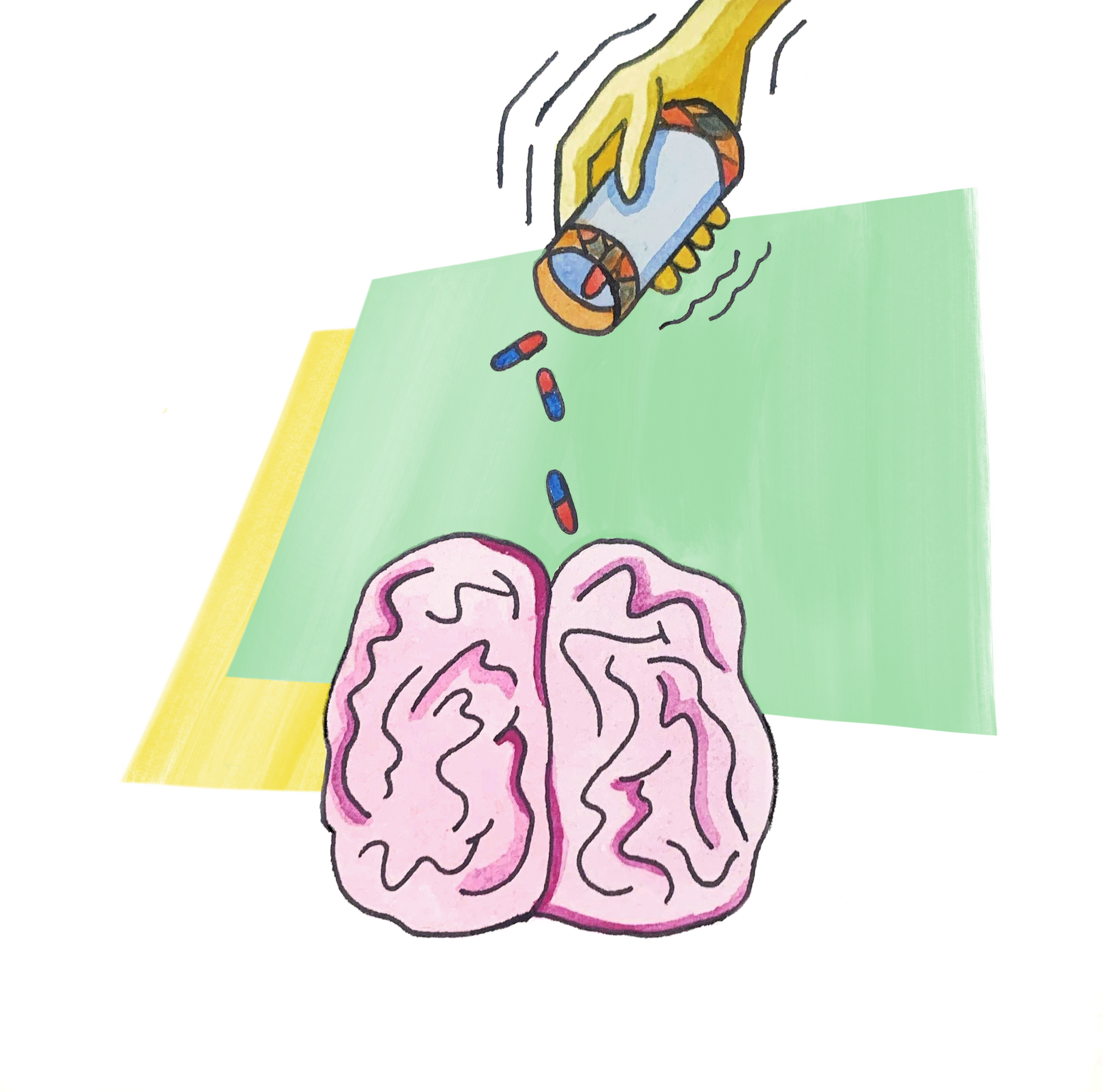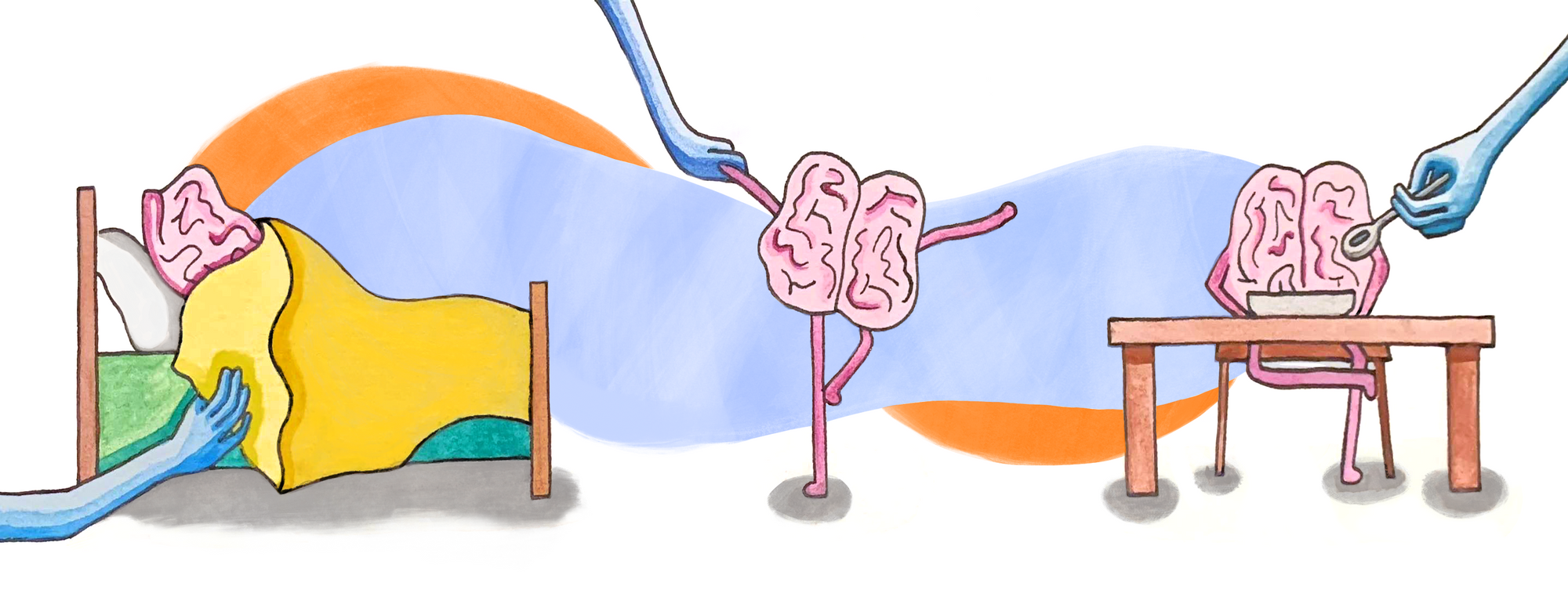The denizens of modern-day, developed countries have living standards that have not been available ever before in human history: a permanent food surplus, technologies that were unthinkable just decades ago, and healthcare that allows us to live for more than a hundred years. Given that the quality of life in developed countries is so spectacular, it follows that we should also be exceptionally healthy––but that is not the case. Despite the relatively amazing quality of life that is afforded to populations in developed countries, over the last century these same populations have seen a climbing incidence in debilitating diseases, such as Alzheimer’s.
Though Alzheimer’s has been at the forefront of public consciousness for many years, its gravity is finally becoming known throughout the world––particularly in developed countries that should be able to escape its grasp. An astonishing 24.3 million people have Alzheimer’s today, with that number projected to more than triple (to 81.1 million) by 2040 [1]. These statistics represent what at first seems to be a paradox, but is really a consequence of living in our day and age. Our increased living standards have extended our lifespans, but we have yet to discover how to retain our quality of life as we age and ward off diseases such as Alzheimer’s [1]. This leaves us asking a couple of questions: why is it that current treatments aren’t very effective, and what can be done to better treat Alzheimer’s disease and ensure that we also retain our quality of life into old age? In order to answer these questions we must first understand what Alzheimer’s disease is, and what its pathology and symptoms entail.
Alzheimer’s is a neurodegenerative disease that results in memory loss, difficulty performing familiar tasks, and changes in mood or personality [2]. It is the most common type of dementia, which is the broader category of brain diseases that cause cognitive decline impairing one’s ability to function normally day-to-day [2]. The scientific literature surrounding Alzheimer’s disease is actively developing, meaning that not everything about the disease is known, but so far one thing can be concluded: the cause of Alzheimer’s disease is very complex. In the brain, at least three molecules are known to be involved in the development of Alzheimer’s disease: amyloid beta (Aβ) peptides, tau proteins, and apoE4 proteins [3].
Aβ is one of the many peptides produced from a protein called APP––which normally regulates synaptic activity and the formation of new connections between neurons––through a process called cleavage [3]. During this process, enzymes attach to APP and break it down into these smaller peptide subunits. In Alzheimer’s patients, an increase in cleavage causes an excess amount of Aβ to be produced from the APP throughout brain tissue. As the amount of Aβ in the brain increases, accumulations of Aβ peptides––known as amyloid plaques––begin to form at the spaces between neurons. Once formed in these spaces, these plaques impair the ability of neurons to communicate with each other using neurotransmitters, the chemicals used by neurons to communicate [3].

Tau undergoes a similar process. Normally, the tau protein stabilizes the structure of microtubules in neurons, which is key to supporting the structure that enables neurons function and communication [3]. However, in the case of Alzheimer’s, the tau protein is hyperphosphorylated, meaning extra phosphoryl chemical groups are attached to the protein, resulting in an abnormal form. In this abnormal form, these proteins are no longer able to help neurons communicate, and instead begin to bunch together to form accumulations in the brain, called neurofibrillary tangles (NFTs). NFTs form at the dendrites of neurons, the parts of neurons that receive signals, where they also interfere with the ability of neurons to transfer signals between each other [3].
To make matters even more complex, these molecules also have synergistic effects with each other [3]. For example, alone, in the stressed neurons that are characteristic of Alzheimer’s disease, apoE4 is broken down into fragments that are toxic to the neuron. These fragments then impair the neuron’s mitochondria, preventing the neuron from making the energy it needs to sustain itself. However, apoE4 in the areas surrounding neurons also prevents the clearance of Aβ from amyloid plaques, which promotes further deposition of Aβ into those plaques [3].
All in all, what is known about Alzheimer’s so far is that it is a complex disease. We do not yet know everything about its underlying mechanisms. However, as more is learned about Alzheimer’s every day, we slowly become better able to innovate and outsmart the disease. With this knowledge in mind, we can begin to ask: what treatments exist for Alzheimer’s today?
The golden standard of Alzheimer’s treatment is a class of drugs called cholinesterase inhibitors (CIs) [4]. These drugs target the pathways in the brain that use acetylcholine––a neurotransmitter that is vital to proper brain function. When an electrical signal reaches the end of a neuron, neurotransmitters are released, making contact with the next neuron to begin the electrical signal once again. It is speculated that one way Alzheimer’s functions is by impairing cholinergic pathways, leading to a decrease in the creation of acetylcholine and the deterioration of acetylcholine-responsive neurons throughout the brain [5]. As a result, overall brain function deteriorates and symptoms start to appear [4]. CIs are used to treat mild to moderate Alzheimer’s by preventing the breakdown of acetylcholine [4]. Preventing the breakdown of acetylcholine enables acetylcholine to be active for longer in the spaces between neurons. This increase in available acetylcholine maintains the activity of acetylcholine neurons in the face of degradation of synapses (hypothesized to be caused by the combination of Aβ, tau, and apoE4), slowing the patient’s progression of Alzheimer’s.
In 2006 and 2008, studies were done on the effects of these drugs on Alzheimer’s patients, compared to a placebo group. The performance of both groups in daily activities was measured using the AD Assessment Scale–Cognitive Subscale test (ADAS-cog), which measures both cognitive and non-cognitive functions (such as mood and behavior). In those studies it was found that, compared to the placebo, Alzheimer’s patients showed a mild improvement in symptoms over the first 3 months of taking CIs, such as improvements in cognitive function and the ability to perform daily activities. Furthermore, they also showed that, while symptoms did progress in the subsequent 3-9 months, they progressed less rapidly than if the patients had not been treated with cholinesterase inhibitors [4].

The studies above show that CIs are effective; however, they also show that they are only effective at targetting the symptoms of Alzheimer’s disease, not the underlying mechanism. As a result, while they do slow the progression of symptoms, they do not actually slow the progression of the disease itself. This leads us to ask: are there any treatments that directly target the mechanisms that underlie Alzheimer’s disease? It turns out that the answer to that question is as seemingly complex as Alzheimer’s itself.
A vast amount of research has been done to figure out what might contribute to the development of Alzheimer’s disease. Alzheimer’s research, so far, has found that 70% of the risk of Alzheimer’s is attributable to genetics, with the remaining 30% of the risk related to modifiable risk factors [6][7]. These factors include lifestyle choices and environmental toxins such as heavy metals, insecticides and pesticides, as well as comorbidities, which are additional health conditions that an individual can have, such as diabetes or cardiovascular disease [6][7]. Seeing as so much of the risk of Alzheimer’s disease comes from factors outside of genetics, this raises the question: is it possible to alter the course of Alzheimer’s by modifying these risk factors? Excitingly enough, studies into the cause of Alzheimer’s and its relationship to these factors suggest the answer could very well be yes.
One lifestyle choice that has been found to have an impact on Alzheimer’s disease is exercise. In a 2013 study at China Medical University, scientists Liu et al. studied the effect of long-term treadmill exercise on improving the cognitive deficits of transgenic mice. These transgenic mice had human genes transplanted into them to mimic Alzheimer’s disease, and were compared to control mice, who did not have the human genes [8]. The genes in question were the APP/PS1 genes: of which the former (the APP gene) codes for the APP protein, and the latter (the PS1 gene) codes for enzymes that are involved in derivation of Aβ from APP. The presence of these genes made the Alzheimer’s mice more likely to exhibit Alzheimer’s-like pathology, such as the accumulation of Aβ in plaques throughout the brain. In transplanting the genes into the Alzheimer’s mice, the scientists hoped to see if exercise did indeed have an impact on the accumulation of Aβ plaques and NFTs in the mices’ brains [8].
In the experiment, the Alzheimer’s mice and the control mice were divided into four groups, depending on whether or not they exercised, and whether or not they were the Alzheimer’s mice or the control mice [8]. The exercise groups, after acclimatizing to doing exercise regularly, were incentivized to run on treadmills for 30 minutes each day, 5 days a week, for 5 months. The non-exercise groups were left on the treadmill, without an incentive to run, for the same amount of time. Once the 5 month period was over, tissue was taken from the mice and stained by immunohistochemistry (IHC) to measure the size and quantity of Aβ plaques between the four groups [8].
To analyze their results, Liu and their colleagues first compared the presence and size of Aβ plaques in the control mice vs the Alzheimer’s mice [8]. In doing so, they found that Aβ plaques were present in the brains of the Alzheimer’s mice, but were completely absent in the brains of the control mice. Liu then did further comparisons of the exercise and non-exercise groups of Alzheimer’s mice, which had developed Aβ plaques in their brains. In these comparisons, Liu found that the Aβ plaques present in the brains of the Alzheimer’s mice that exercised were on average 23% smaller, and 35% less in number, than the plaques in the brains of the non-exercise Alzheimer’s mice. These results, amazingly, suggest that exercise decreases both the size and amount of Aβ plaques that form in the brain of mice [8].
Another lifestyle choice that has been found to have an impact on Alzheimer’s disease is diet. In a 2012 study done in Australia, Gardener et al. evaluated whether adherence to the Mediterranean Diet was associated with the development of Alzheimer’s, as well as mild cognitive impairment (MCI)––a condition where individuals have difficulties with cognitive tasks such as memory or planning––in comparison to healthy individuals who had neither [9]. The Mediterranean Diet (MeDi) is a diet characterized by a high intake of vegetables, legumes, fruits, cereals, fish and unsaturated fatty acids (mostly in the form of olive oil); a low intake of saturated fatty acids, meat and poultry; a low-to-moderate intake of dairy products (mostly cheese and yogurt); and a regular but moderate amount of alcohol (mostly wine, with meals). For the study, Gardener et al. gathered a group of 1112 elderly volunteers (60 years or older), and were categorized by whether they were healthy controls, had MCI, or had Alzheimer’s [9].
Each participant filled out a 74-item survey, the Cancer Council of Victoria Food Frequency Questionnaire, that evaluated their daily food intake over the preceding 12 months [9]. They completed this survey at the beginning of the study and at the follow-up assessment 18 months later. The results of the survey were then used to determine the adherence of participants to the MeDi. Each time a participant’s diet was found to meet one of the criteria of the MeDi, described above, they were given a point. These points were then added together to produce a total MeDi score, ranging from 0 to 9, where a higher score meant a higher adherence to the MeDi. The obtained MeDi scores were then analyzed using multinomial logistic regression, adjusting for confounding variables such as age, sex, and comorbidities, such as diabetes and hypertension [9].
The study found that participants with MCI and Alzheimer’s both had a lower average MeDi score than healthy controls [9]. Meanwhile, there was no significant difference in average MeDi score between the MCI and Alzheimer’s groups. This meant that, over the course of the study, the healthy controls were more likely to adhere to the MeDi diet than their MCI/Alzheimer’s counterparts. Furthermore, it was found that each additional point an individual got in their MeDi score was associated with a 13-19% lower chance of that individual being in the MCI category, and a 19-26% lower chance of being in the Alzheimer’s category. While this observational study can only draw correlations, unlike the above experimental mouse study which can draw causative links between Alzheimer’s and exercise, its results are still significant. They suggest that diet could lower the risk of an individual’s cognitive decline, even though the specific mechanisms behind such an association are yet to be known [9].

The implications of the above two studies are very exciting. They show, through the lenses of exercise and diet, that the choices we make everyday can have an impact on our risk for Alzheimer’s disease. The hope is that, in identifying the lifestyle choices that may contribute to Alzheimer’s, we can combat or even prevent it. That being said, it is important not to let our excitement with these discoveries make us jump the gun, as the road from implications to implementation is riddled with potholes. One such example can be found in a study by Dr. Dale Bredesen in 2016 [10].
In a 2016 analysis, Bredesen et al. featured case studies of a group of 10 patients ranging from pre-Alzheimer’s to early Alzheimer’s, aged 55 to 75, all of which were treated with the MEND program [10]. The MEND program is an Alzheimer’s treatment, designed by Bredesen, that aims to alter the course of Alzheimer’s disease by altering factors such as the levels of heavy metals in the body, nutrient deficiencies, diet, exercise, and sleep. From the beginning to the end of the treatment period, their improvement was recorded using various tests and tools that measured hippocampal brain volume, their subjective experiences, and their cognitive function. One such tool was Magnetic Resonance Imaging (MRI), which generates images of the body and brain using radio waves. Another such tool was the Montreal Cognitive Assessment, which asks a series of questions to patients to look for signs of cognitive impairment [10].
Before the application of the treatment, six of the 10 patients had to discontinue working because of their Alzheimer’s progression [10]. Post-treatment, it was reported that all six of the patients were able to return to work. Furthermore, one of the patients saw an increase in their hippocampal volume from the 17th percentile to the 75th percentile, which suggests that the patient’s brain tissue may have been regenerated between the beginning and end of the treatment. These results suggest that the MEND program could not only prevent, but even reverse Alzheimer’s disease. Its implications seem near miraculous, making it seem like a silver bullet for treating and preventing Alzheimer’s [10]. However, while the MEND program shows promise on the surface, the reality is that Bredesen’s study serves as a prime example of how a study’s design can severely impact the validity of its results [10].
The problem with Dr. Bredesen’s study, and the reason why its results are questionable, comes from the study’s design. A criticism done in 2017, by Joanna Hellmuth, outlines a plethora of flaws in the study’s design which would make the results of the study significantly less reliable than Dr. Bredesen insinuates [11]. Among these are: the testing of a hypothesis using case studies; a lack of a methods section in the study; limited information on how the tests used were performed and evaluated for efficacy; and no discussion of the study’s limitations in its report. Each of these factors impacts the validity and implications of the study. For example, Bredesen’s study features case studies, which cannot be used to test hypotheses, as case studies only collect observational data, and has an extraordinarily small sample size at that. In order to test a hypothesis, an experiment has to be created with conditions such as the testing of only one variable in the presence of a control, repeated with large sample sizes for the best results. As such, it cannot definitively be said that what caused the patients to improve was the MEND program, as too many other factors were present in the study that could have interfered with its results. Another example is that Bredesen’s study lacks a methods section, making other scientists unable to replicate the study even if they want to. As a result, it is impossible for other scientists to further test the implications of the study [11].
Because of the above, Bredesen’s study lacks a degree of scientific accuracy and transparency calling his results into question. It crashes into the many potholes that stretch from implications to implementation. However, Bredesen’s study is valid and significant in a different sense: it serves as a reminder that in order for scientific conclusions to be drawn, experiments and studies have to be well-made. In this specific context, that means that in order for a new standardized treatment of Alzheimer’s to be created––centered around modifiable risk factors such as exercise and diet––experiments have to be created that are transparent, replicable, and strictly constrained, so as to make sure that the results of those experiments are reliable. It is only then that we can begin to see if our everyday choices can truly alter the way that Alzheimer’s disease develops in ourselves, our friends, and our families.
All in all, it is obvious that Alzheimer’s is an incredibly complex disease. Due to this complexity, it is a disease whose cause we do not know very much about; however, that in of itself is no reason to lose hope. Over the last few decades, scientists across the globe have collaborated to bring to light groundbreaking discoveries that have completely transformed our understanding of Alzheimer’s. Thanks to this new understanding, new treatments are being proposed for Alzheimer’s that could loosen its grip on humanity. Research into lifestyle choices, among other factors, suggests that if we alter the way we make choices and interact with our environment we may be able to influence the outcome of Alzheimer’s disease. That being said, we have to be careful of the way we translate the implications of these studies into practice.
When it comes to the studies on modifiable risk factors, it is important to remember that there is risk in generalizing the findings of a study to a general population. There is a large amount of variation to be found in humans, and the implications of a study of a population on one side of the globe may not apply to a population on the other side. The danger of extrapolation extends even further when looking at Alzheimer’s in other species, such as mice. It is important to take these findings with a grain of salt as, although we have a lot in common, the biology we share with other species is limited.
Going forward, our hope lies in creating new treatments that leverage the implications of the aforementioned studies in order to treat Alzheimer’s disease. This is where Dr. Bredesen’s MEND protocol serves as an important lesson. If we are to develop treatments that target environmental factors and lifestyle choices, we have to strictly test these treatments in properly randomized, controlled clinical trials. Otherwise, the supposed effectiveness of these new treatments may come down to blind luck or the placebo effect, and these new treatments will not be sustainable in the long run.
It can be said that Dr. Bredesen’s study falls short in many ways. However, his study is symbolic of something very admirable and extremely hopeful: an approach to Alzheimer’s disease that yearns to combat and slow its progress, as opposed to simply slowing the progression of its symptoms. These studies––on exercise and diet––show that it may be possible to change our Alzheimer’s fate, and if we succeed in doing so we will be able to steal back from Alzheimer’s the months and years that it takes from its victims. The significance of such a fact is hard to overstate.
References
- Ferri, C. P., Prince, M., Brayne, C., Brodaty, H., Fratiglioni, L., Ganguli, M., . . . Scazufca, M. (2005). Global prevalence of dementia: A Delphi consensus study. The Lancet, 366(9503), 2112-2117. doi:10.1016/s0140-6736(05)67889-0.
- What is Alzheimer's Disease? (2020, June 02). Retrieved October 20, 2020, from https://www.cdc.gov/aging/aginginfo/alzheimers.htm.
- Huang, Y., & Mucke, L. (2012). Alzheimer Mechanisms and Therapeutic Strategies. Cell, 148(6), 1204-1222. doi:10.1016/j.cell.2012.02.040.
- Yiannopoulou, K. G., & Papageorgiou, S. G. (2012). Current and future treatments for Alzheimer’s disease. Therapeutic Advances in Neurological Disorders, 6(1), 19-33. doi:10.1177/1756285612461679.
- Cummings, Jeffrey L., and Carla Back. “The Cholinergic Hypothesis of Neuropsychiatric Symptoms in Alzheimer's Disease.” The American Journal of Geriatric Psychiatry, vol. 6, no. 2, 1998, doi:10.1097/00019442-199821001-00009.
- Yegambaram, M., Manivannan, B., Beach, T., & Halden, R. (2015). Role of Environmental Contaminants in the Etiology of Alzheimer’s Disease: A Review. Current Alzheimer Research, 12(2), 116-146. doi:10.2174/1567205012666150204121719.
- Edwards III, G. A., Gamez, N., Jr., G. E., Calderon, O., & Moreno-Gonzalez, I. (2019). Modifiable Risk Factors for Alzheimer’s Disease. Frontiers in Aging Neuroscience, 11. doi:10.3389/fnagi.2019.00146.
- Liu, H., Zhao, G., Zhang, H., & Shi, L. (2013). Long-term treadmill exercise inhibits the progression of Alzheimer's disease-like neuropathology in the hippocampus of APP/PS1 transgenic mice. Behavioural Brain Research, 256, 261-272. doi:10.1016/j.bbr.2013.08.008.
- Gardener, S., Gu, Y., Rainey-Smith, S. R., Keogh, J. B., Clifton, P. M., Mathieson, S. L., . . . Martins, R. N. (2012). Adherence to a Mediterranean diet and Alzheimer’s disease risk in an Australian population. Translational Psychiatry, 2(10). doi:10.1038/tp.2012.91.
- Bredesen, D. E., Amos, E. C., Canick, J., Ackerley, M., Raji, C., Fiala, M., & Ahdidan, J. (2016). Reversal of cognitive decline in Alzheimer's disease. Aging, 8(6), 1250-1258. doi:10.18632/aging.100981.
- Hellmuth, J. (2020). Can we trust The End of Alzheimer's? The Lancet Neurology, 19(5), 389-390. doi:10.1016/s1474-4422(20)30113-7.
